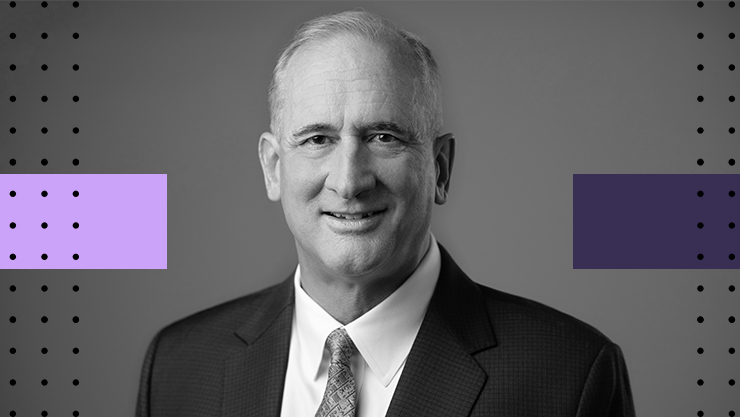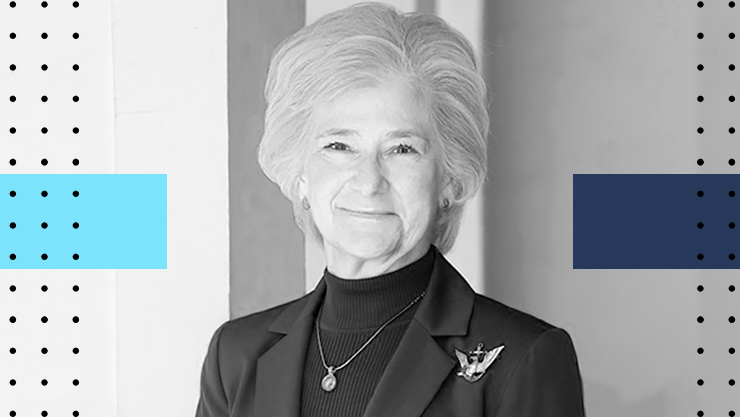
Cyber, Communications and Collaboration in Defense
with Lt. Gen. Alan Lynn (Ret.)Insights from Lt. Gen. Alan Lynn (Ret.), the former Commander of the US Defense Information Systems Agency.

This is a show for anyone who cares about using digital approaches in the public sector to deliver better outcomes. We explore stories from around the world, where public servants have been successful at driving change. We meet the people behind the stories, to hear their first-hand experiences and lessons learned. Throughout the series we discuss technology and trends, as well as the cultural aspects of making change happen.
Lt. Gen. Alan Lynn (Ret.) is the former Commander of the US Defense Information Systems Agency. He began building his expertise in military communications early in his career, and this developed through roles which took him around the world, including NATO communications, peacekeeping operations in Bosnia, and communications for the US in the Pacific. Lt. Gen. Lynn joins guest host AT Ball to share his insights on establishing cyber as domain, the role of technology in collaboration and communication, and the importance of understanding the needs of those in the field.
Click here for transcript of this episode.
AT Ball [host] | LinkedIn
Lt. Gen. Alan Lynn (Ret.) [guest] | LinkedIn
Microsoft Public Sector Center of Expertise for more information and transcripts of all episodes.
Click here for additional links and information on this episode with Lt. Gen. Alan Lynn (Ret.).
Discover and follow other Microsoft podcasts at news.microsoft.com/podcasts/.

Episode summary
Lt. Gen. Alan Lynn (Ret.) is the former Commander of the US Defense Information Systems Agency. He joins guest host AT Ball to share his insights on establishing cyber as domain, the role of technology in collaboration and communication, and the importance of understanding the needs of those in the field.
Cyber, Communications and Collaboration in Defense
Lt. Gen. Alan Lynn (Ret.) began building his expertise in military communications early in his career, and this developed through roles which took him around the world, including NATO communications, peacekeeping operations in Bosnia, and communications for the US in the Pacific. This passion and depth of experience led him to serve as the Director of the Defense Information Systems Agency (DISA). He joins guest host AT Ball to share his lessons on the role of technology in meeting the needs of those who serve.
Establishing cyber as a new domain
Looking back on his time as Director of the Defense Information Systems Agency (DISA), Lynn shared that one of the early challenges was establishing cyber as a domain. He reflected that “Of course, nobody would argue that today, but that was the starting point. There’s air, there’s land, there’s sea, and there’s cyber. And then you would point back to Estonia, back in 2007 and say the start for warfare, it looks to me like it’s going to be a cyberattack first.”
“The next big challenge was how do you maneuver in cyberspace? So now you have to imagine yourself in a digital space and be able to maneuver in that space and lock down areas within the infrastructure to provide security. Well, then, of course, then you need to create the cyber tools to do that.”
“We started working on cyber tools, but the other part of cyber defense, [is] if you build your infrastructure wrong, you’ve got problems in your cyber defense. So you have to build your infrastructure right. You have to be resilient to a cyberattack.”
“And then of course, you have to develop the workforce, you have to develop a cyber workforce that’s able to actually work and maneuver in cyberspace.”
Organizing data for decision advantage
Lynn outlined how new tools can help to address the challenge of managing and using increasing amounts of data, “I think like an engineer, so I would be looking to segregate data into different groups. So if I was engineering, I would engineer it like that. But this is where AI can also help. You’ll be able to do a lot of fixing of your data, you’ll be able to find it, you’ll be able to de-duplicate it. So you’d have the most current information.”
“I don’t want to say it’s a panacea. You need some good engineering, you probably need some ML thrown in there as well, but I think it’s a huge opportunity to take advantage of the new technology.”
Understanding the problem and meeting needs
Lynn emphasized the importance of developing solutions and approaches which meet needs, “First of all, you really have to be customer focused. You really have to spend time with the soldiers in the field. They’re smart, they know what they need, and you just need to have the leaders listen.”
“The senior leaders have great ideas, but the junior guys know the problem better than anybody else. They’re closer to the problems… I would recommend it to every leader, just get down to the lowest possible level. And if you can sneak down there without them knowing you’re coming even better, without all the entourage just show up.”
Creating new opportunities with technology
Lynn explained his approach to identifying opportunities for uses of new technology, “My career has been trying to focus on what the soldier needs, what the customer needs. I think you have to start there.
“I think this generation pretty much live and die by their cell phone. As you innovate and develop, there’s great opportunities on developing things like augmented reality that help with education, maintenance, training for different systems, just looking through your camera on your phone.”
“But I think gaming and simulation is going to be huge, with augmented reality, as well, to make you feel like you’re in a situation where you’re immersive… If we can do that in every instance of every job that you get a chance to run through it multiple times before you actually have to do it, I think that would be amazing.”
Interoperability with allies and international best practice
Lynn emphasized the importance of ongoing collaboration to enable effective operations, “I’ve got quite a bit of running time with multinational forces, and to think that one country has all the great ideas is just nonsense. All of our partners have some really amazing ideas and some amazing technologies, and it’s just getting a forum together so we can see how we can operate together.”
“Bosnia was a huge example to me on how much commercial helped to synchronize all the different systems, other than the 5040 interfaces that were required by NATO, and making this mesh between a tactical and commercial, I think it’s really, really important because you’re going to need it all. You need all the tools in the toolbox whenever you go with our allies.”
“So let’s upfront that technology and use cases and develop the platforms that we’re going to use way beforehand, as opposed to land and expand, which I’ve had to do, and you really don’t want to do it that way. You want to test that out way beforehand.”
Leveraging talent across sectors
Lynn shared his recommendations to build and use talent across sectors, “I think it’s twofold. First of all, I would recommend to anybody in industry that’s working with the Department of Defense is to hire veterans, hire people that have walked the walk, talk the talk, know what the people in the field need, and they’re exceptional.”
“I would try to bring leaders also that are currently in the military or in the reserves, bring them in and out of key positions in the commercial sector, and then back into the military or government space so there’s a cross leveling of ideas.”
“And same thing with higher level education. Bring some students in that are trying to do something and show them what’s happening in the Department of Defense. Show them what’s happening in the Army. Teach them a little bit more about what’s happening and what the problem sets are. I think both groups will learn, and you’ve got recruiting on both sides of that equation so I think it’s a win-win.”
Opportunities for faster adoption of digital technologies to solve operational challenges
Lynn reflected on opportunities for leaders within defense organizations to be able to work with industry to adopt and use new technologies more quickly, “First of all, the rules have to change. A lot of the big technologists from early on, they were in government, and we still have a lot of great people in government, but a lot of what we need now is in the commercial sectors. But the rules are still set up as if the government has all the talent. And so you’ve got to change the rules.”
“And then you have the other one. Let’s say I develop something amazing with an industry partner. As soon as it’s completed, and I want somebody to run it, then you’ve got the contracting laws, where now everybody has to bid for that contract. So there’s some things that need to be looked at. Nothing’s perfect, but they’re making some really good strides in this area by new contracting vehicles.”
Listen to this episode on any of these podcast platforms:
About the Center of Expertise
Microsoft’s Public Sector Center of Expertise brings together thought leadership and research relating to digital transformation in the public sector. The Center of Expertise highlights the efforts and success stories of public servants around the globe, while fostering a community of decision makers with a variety of resources from podcasts and webinars to white papers and new research. Join us as we discover and share the learnings and achievements of public sector communities.
Questions or suggestions?










